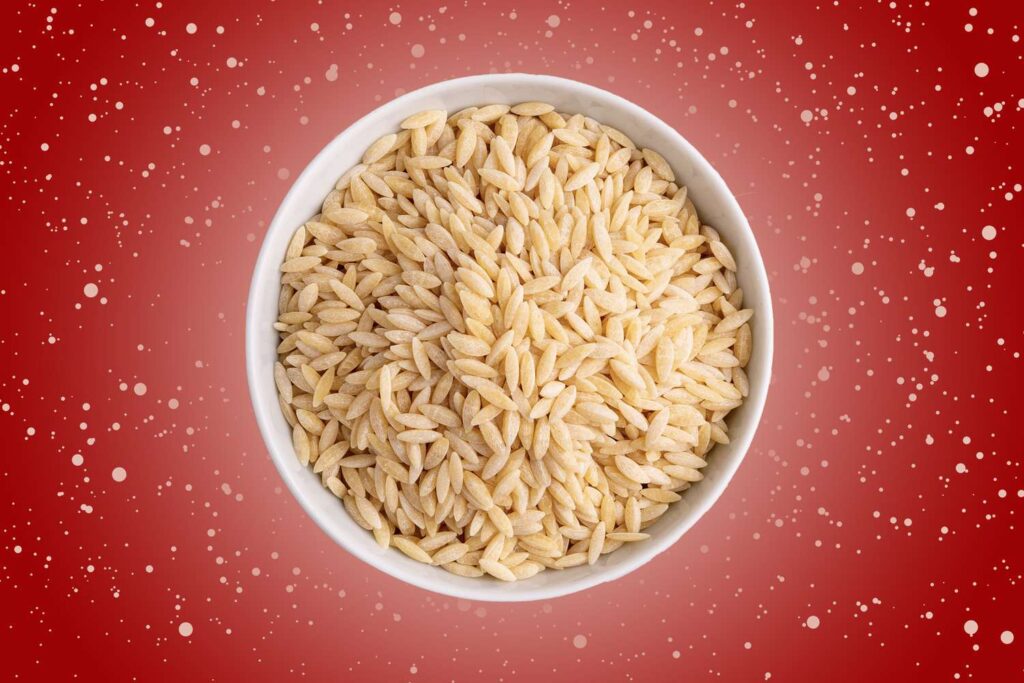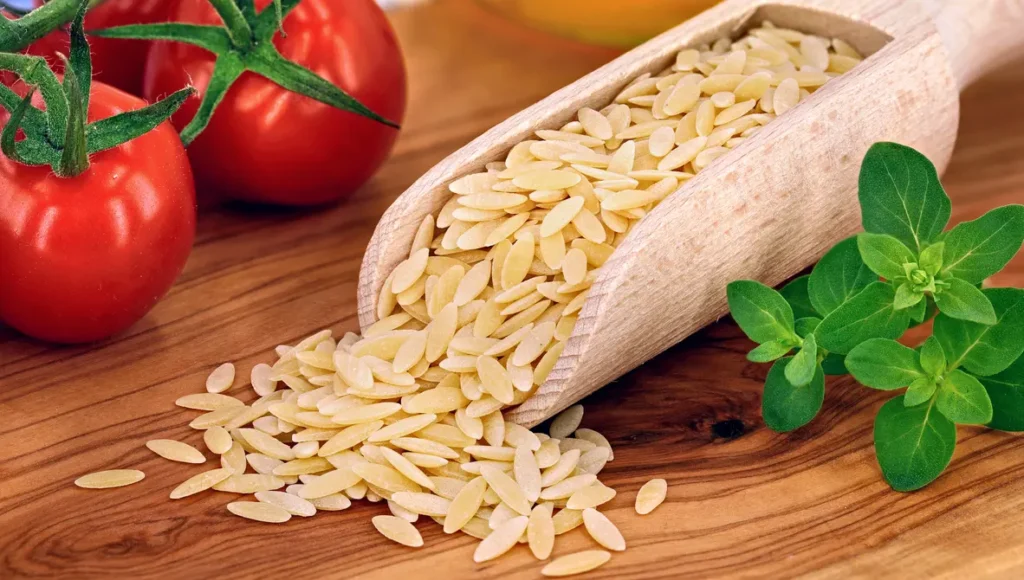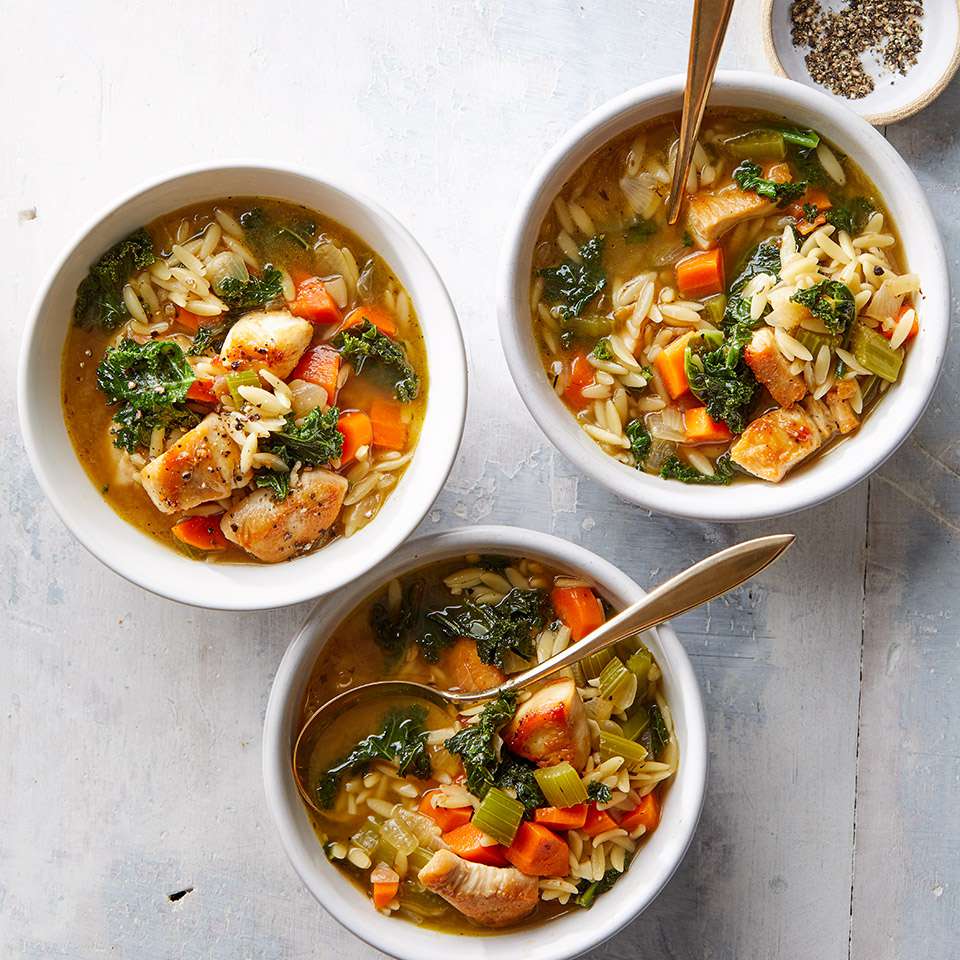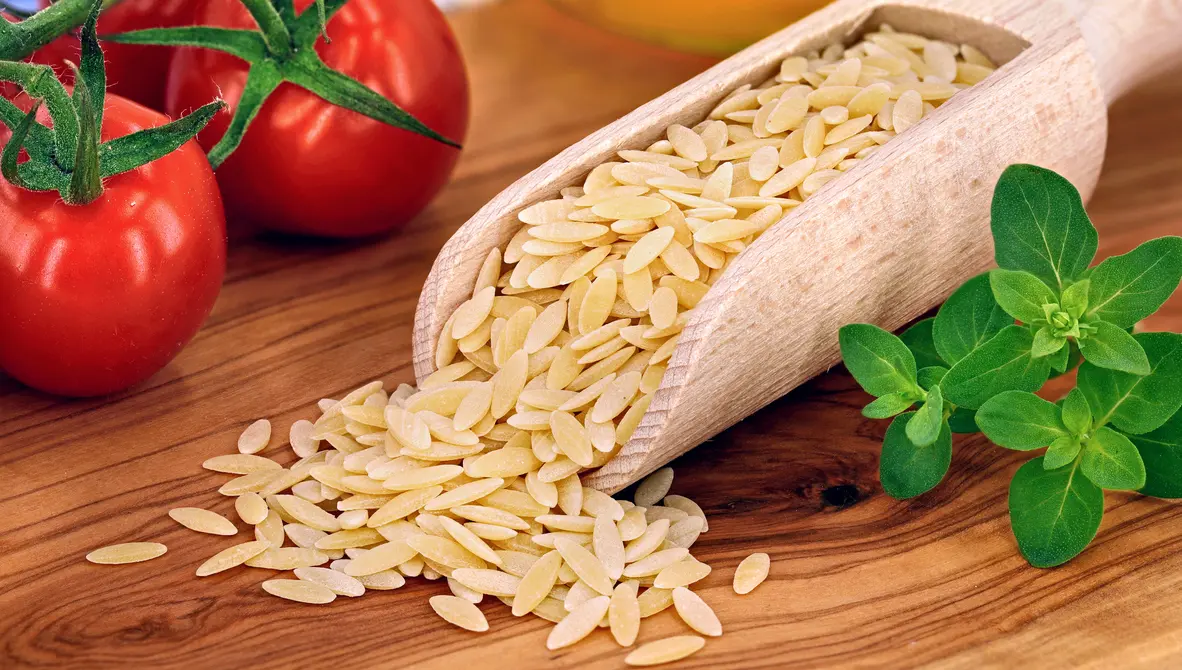Welcome to Tastetrove, your go-to destination for all things delicious and nutritious! If you’re a pasta lover looking to diversify your meals, orzo might just be the hidden gem you’ve been searching for. Often mistaken for rice due to its small, barley-like shape, orzo is actually a type of pasta made from semolina flour, originating from Italy. The name “orzo” means “barley” in Italian, reflecting its resemblance to the grain. This versatile ingredient has gained popularity in Mediterranean cuisine, soups, salads, and even as a side dish, offering a delightful texture that’s both chewy and tender when cooked properly.
Orzo Nutrition is an essential topic for anyone who loves this versatile pasta but also values healthy eating. Many people are discovering that Orzo Nutrition offers a great balance of carbohydrates, protein, and essential nutrients. When compared to traditional pasta, Orzo Nutrition provides similar energy levels but can be enhanced with whole-grain versions. Athletes and active individuals appreciate Orzo Nutrition for its ability to provide lasting energy and support muscle recovery. Adding vegetables, lean proteins, and olive oil can improve Orzo Nutrition and make meals more balanced. Health experts often highlight Orzo Nutrition as a smart option for those seeking variety in their diet. By understanding Orzo Nutrition, you can enjoy delicious meals while maintaining a nutritious lifestyle.
In this comprehensive article, we’ll dive deep into the nutrition facts of orzo, exploring its macronutrients, vitamins, and minerals. We’ll also uncover the health benefits that make it a worthy addition to your diet, from providing sustained energy to supporting digestive health. Whether you’re an athlete needing fuel or someone aiming for balanced nutrition, understanding orzo can help you make informed choices. Plus, we’ll touch on how to incorporate it into your meals with links to some of our favorite recipes here on Tastetrove. Let’s get started!
What is Orzo?
Orzo, also known as risoni in some regions, is a short-cut pasta that’s shaped like large grains of rice or barley. It’s typically made from durum wheat semolina, which is the same flour used in many traditional pastas. Unlike rice, which is a grain, orzo falls under the pasta category, meaning it’s processed differently and often enriched with nutrients during manufacturing.
Orzo Nutrition is gaining attention among health-conscious food lovers who enjoy balanced and delicious meals. Many dietitians praise Orzo Nutrition for its moderate calorie count and high energy value, making it ideal for active lifestyles. When made from whole grains, Orzo Nutrition improves with added fiber and essential vitamins. The versatility of Orzo Nutrition allows it to pair well with vegetables, lean proteins, and healthy fats. People focused on weight management appreciate Orzo Nutrition for its ability to keep meals filling yet light. Athletes benefit from Orzo Nutrition because it provides sustained energy for workouts and recovery. With the right ingredients and cooking methods, Orzo Nutrition supports both taste and wellness in every bite.
Historically, orzo has roots in Italian and Greek cuisines, where it’s used in dishes like Greek kritharaki or Italian minestrone soups. Its small size allows it to absorb flavors exceptionally well, making it ideal for pilafs, casseroles, and cold salads. In modern kitchens, orzo has become a staple for quick meals because it cooks in just 8-10 minutes, faster than many other pastas.
One of the appeals of orzo is its adaptability. You can treat it like rice in risotto-style dishes or mix it into salads for a hearty twist. For those exploring gluten-free options, there are versions made from rice flour or lentils, but traditional orzo contains gluten. If you’re new to orzo, check out our https://tastetrove.net/ for more insights.
Orzo Nutrition is an excellent topic for those who want to combine taste and health in one meal. The benefits of Orzo Nutrition include a good source of complex carbohydrates that provide lasting energy. Many people choose Orzo Nutrition as a lighter pasta option that still delivers great flavor and texture. Whole-grain varieties enhance Orzo Nutrition by adding more fiber, protein, and essential minerals. Fitness enthusiasts value Orzo Nutrition for its role in fueling workouts and supporting muscle recovery. When paired with fresh vegetables and olive oil, Orzo Nutrition becomes a complete and balanced dish. For anyone pursuing healthy eating goals, Orzo Nutrition offers both nourishment and versatility in everyday cooking.

Beyond its culinary uses, orzo’s nutritional profile sets it apart. It’s not just empty calories; it packs a punch with essential nutrients that support overall health. In the next sections, we’ll break down the facts and benefits in detail.
Orzo Nutrition is becoming increasingly popular among people looking for healthy and satisfying meal options. Many nutrition experts highlight Orzo Nutrition for its ability to provide steady energy throughout the day. When incorporated into balanced meals, Orzo Nutrition supports overall wellness and dietary variety. The benefits of Orzo Nutrition extend to heart health when paired with olive oil, vegetables, and lean proteins. Athletes and busy professionals alike rely on Orzo Nutrition for a quick yet nourishing source of fuel. Choosing whole-grain options enhances Orzo Nutrition by increasing fiber and nutrient content. With its light texture and versatile flavor, Orzo Nutrition makes healthy eating simple, delicious, and effective.
Orzo Nutrition Facts: A Detailed Breakdown
To understand orzo’s value, let’s look at its nutritional composition. The data here is based on a standard 2-ounce (56 grams) dry serving of regular orzo pasta made from refined semolina flour, as per reliable sources.
- Calories: Approximately 210 calories. This makes orzo a moderate-energy food, suitable for active lifestyles without being overly dense.
- Total Carbohydrates: 44 grams. Carbs are the primary component, providing quick energy. Of these, about 2 grams are dietary fiber, which aids digestion, and 2 grams are natural sugars with no added sugars.
- Protein: 7 grams. Orzo offers a decent amount of plant-based protein, which is higher than many grains like white rice.
- Fat: Less than 1 gram, with negligible saturated fat. This low-fat profile makes it heart-friendly when prepared without heavy sauces.
- Vitamins and Minerals: Orzo is often enriched, providing thiamin (vitamin B1), niacin (vitamin B3), folate, and iron. A serving can deliver up to 10-15% of your daily iron needs, crucial for oxygen transport in the blood. It also contains small amounts of zinc, magnesium, and phosphorus.
For comparison, whole wheat orzo boosts the fiber content to around 9 grams per serving, reducing net carbs and enhancing satiety. If you’re watching your intake, note that cooked orzo expands, so 56 grams dry yields about 1 cup cooked, with calories diluting to around 150-200 per cup depending on preparation.
Let’s put this in perspective with other foods. Compared to white rice (which has about 200 calories and 4 grams protein per cooked cup), orzo edges out with more protein and similar carbs. Versus quinoa, orzo has fewer proteins (quinoa has 8 grams per cooked cup) but is cheaper and quicker to prepare.
It’s worth noting that nutritional values can vary by brand. For precise data, refer to the USDA FoodData Central, which provides detailed breakdowns. Always check labels for enriched versions to maximize benefits.
In terms of micronutrients, orzo’s B vitamins support metabolism, converting food into energy efficiently. Iron content is particularly beneficial for vegetarians, as plant-based iron pairs well with vitamin C-rich foods to improve absorption.
Overall, orzo’s balanced macro profile—high carbs, moderate protein, low fat—makes it a versatile base for nutritious meals. Pair it with veggies, lean proteins, and healthy fats for a complete dish.
Health Benefits of Orzo: Why Include It in Your Diet?
Orzo isn’t just tasty; its nutrients translate into tangible health benefits. Here’s a closer look at how it can support your well-being.
1. Provides Sustained Energy
With 44 grams of carbohydrates per serving, orzo is an excellent energy source. Carbs are the body’s preferred fuel, especially for brain function and physical activity. Unlike simple sugars, the complex carbs in orzo release energy gradually, preventing blood sugar spikes. This makes it ideal for athletes or busy professionals needing steady stamina throughout the day.
Studies show that carbohydrate-rich foods like pasta can enhance endurance during exercise. For instance, consuming orzo before a workout could help maintain performance levels, similar to how runners carb-load with pasta.
2. Supports Muscle Repair and Growth
The 7 grams of protein in orzo contribute to muscle maintenance and repair. While not as protein-dense as meat, it’s a valuable addition for plant-based diets. Protein helps build enzymes, hormones, and tissues, and orzo’s amino acids complement other foods like beans or cheese.
Research links higher protein intake with better metabolism and weight management. In fact, orzo’s protein can boost satiety, helping you feel full longer and potentially aiding weight loss efforts.
3. Promotes Digestive Health
The fiber in orzo, though modest at 2 grams, supports gut health by adding bulk to stools and preventing constipation. Opting for whole wheat orzo increases this to 9 grams, which is about 30% of daily needs, promoting a healthy microbiome.
Fiber also helps regulate cholesterol levels, reducing heart disease risk. Pairing orzo with fiber-rich veggies amplifies these benefits.
4. Boosts Nutrient Intake with Enrichment
Enriched orzo provides essential vitamins like thiamin and niacin, which aid energy metabolism and nerve function. Folate supports cell division and is vital during pregnancy. Iron combats anemia, especially in women and children.
Zinc in orzo supports immune function, wound healing, and taste perception. These micronutrients make orzo a nutrient-dense choice over plain rice.
5. Versatile for Heart-Healthy Diets
Low in fat and sodium (unless added), orzo fits into heart-healthy eating patterns like the Mediterranean diet. Its versatility allows for olive oil-based sauces, fresh herbs, and veggies, enhancing antioxidant intake.
Studies suggest pasta consumption, when part of a balanced diet, doesn’t lead to weight gain and may even support cardiovascular health.
6. Aids in Weight Management
Despite being carb-heavy, orzo’s portion control and protein-fiber combo can help with weight goals. It cooks up voluminous, so you get more food for fewer calories compared to denser foods.
One study found that higher-protein pastas like orzo promote fullness, reducing overall calorie intake.
In summary, orzo’s benefits stem from its balanced nutrients, making it a smart, enjoyable choice for health-conscious eaters.
How to Incorporate Orzo into Your Meals
Orzo is incredibly easy to use. Boil it like pasta, then toss with pesto, veggies, or proteins. Try our Mediterranean Orzo Salad Recipe for a quick lunch. Or, make a warm pilaf with broth and herbs—check our orzo pilaf guide.
For health boosts, combine with leafy greens, tomatoes, and feta for antioxidants.
Potential Drawbacks and Considerations
While beneficial, orzo contains gluten, so it’s unsuitable for celiac disease sufferers. Overconsumption of refined carbs can affect blood sugar, so pair with proteins and fats. Whole grain versions mitigate this.
Allergies to wheat are another concern. Always consult a doctor for personalized advice.
Conclusion
Orzo is more than a cute pasta—it’s a nutritional powerhouse offering energy, protein, and essential vitamins. By including it mindfully, you can enjoy its health benefits while savoring delicious meals. Explore more on Tastetrove, like our nutrition hub, and for external resources, visit EatingWell or Verywell Fit.
What is Orzo?
Orzo, also known as risoni in some regions, is a short-cut pasta that’s shaped like large grains of rice or barley. It’s typically made from durum wheat semolina, which is the same flour used in many traditional pastas. Unlike rice, which is a grain, orzo falls under the pasta category, meaning it’s processed differently and often enriched with nutrients during manufacturing.
Historically, orzo has roots in Italian and Greek cuisines, where it’s used in dishes like Greek kritharaki or Italian minestrone soups. Its small size allows it to absorb flavors exceptionally well, making it ideal for pilafs, casseroles, and cold salads. In modern kitchens, orzo has become a staple for quick meals because it cooks in just 8-10 minutes, faster than many other pastas.
One of the appeals of orzo is its adaptability. You can treat it like rice in risotto-style dishes or mix it into salads for a hearty twist. For those exploring gluten-free options, there are versions made from rice flour or lentils, but traditional orzo contains gluten. If you’re new to orzo, check out our guide to pasta varieties for more insights.
Beyond its culinary uses, orzo’s nutritional profile sets it apart. It’s not just empty calories; it packs a punch with essential nutrients that support overall health. In the next sections, we’ll break down the facts and benefits in detail.
Orzo Nutrition Facts: A Detailed Breakdown
To understand orzo’s value, let’s look at its nutritional composition. The data here is based on a standard 2-ounce (56 grams) dry serving of regular orzo pasta made from refined semolina flour, as per reliable sources.
- Calories: Approximately 210 calories. This makes orzo a moderate-energy food, suitable for active lifestyles without being overly dense.
- Total Carbohydrates: 44 grams. Carbs are the primary component, providing quick energy. Of these, about 2 grams are dietary fiber, which aids digestion, and 2 grams are natural sugars with no added sugars.
- Protein: 7 grams. Orzo offers a decent amount of plant-based protein, which is higher than many grains like white rice.
- Fat: Less than 1 gram, with negligible saturated fat. This low-fat profile makes it heart-friendly when prepared without heavy sauces.
- Vitamins and Minerals: Orzo is often enriched, providing thiamin (vitamin B1), niacin (vitamin B3), folate, and iron. A serving can deliver up to 10-15% of your daily iron needs, crucial for oxygen transport in the blood. It also contains small amounts of zinc, magnesium, and phosphorus.
For comparison, whole wheat orzo boosts the fiber content to around 9 grams per serving, reducing net carbs and enhancing satiety. If you’re watching your intake, note that cooked orzo expands, so 56 grams dry yields about 1 cup cooked, with calories diluting to around 150-200 per cup depending on preparation.
Let’s put this in perspective with other foods. Compared to white rice (which has about 200 calories and 4 grams protein per cooked cup), orzo edges out with more protein and similar carbs. Versus quinoa, orzo has fewer proteins (quinoa has 8 grams per cooked cup) but is cheaper and quicker to prepare.
It’s worth noting that nutritional values can vary by brand. For precise data, refer to the USDA FoodData Central. Always check labels for enriched versions to maximize benefits.
In terms of micronutrients, orzo’s B vitamins support metabolism, converting food into energy efficiently. Iron content is particularly beneficial for vegetarians, as plant-based iron pairs well with vitamin C-rich foods to improve absorption.
Overall, orzo’s balanced macro profile—high carbs, moderate protein, low fat—makes it a versatile base for nutritious meals. Pair it with veggies, lean proteins, and healthy fats for a complete dish.
(Word count so far: approximately 950)

Health Benefits of Orzo: Why Include It in Your Diet?
Orzo isn’t just tasty; its nutrients translate into tangible health benefits. Here’s a closer look at how it can support your well-being.
1. Provides Sustained Energy
With 44 grams of carbohydrates per serving, orzo is an excellent energy source. Carbs are the body’s preferred fuel, especially for brain function and physical activity. Unlike simple sugars, the complex carbs in orzo release energy gradually, preventing blood sugar spikes. This makes it ideal for athletes or busy professionals needing steady stamina throughout the day.
Studies show that carbohydrate-rich foods like pasta can enhance endurance during exercise. For instance, consuming orzo before a workout could help maintain performance levels, similar to how runners carb-load with pasta.
2. Supports Muscle Repair and Growth
The 7 grams of protein in orzo contribute to muscle maintenance and repair. While not as protein-dense as meat, it’s a valuable addition for plant-based diets. Protein helps build enzymes, hormones, and tissues, and orzo’s amino acids complement other foods like beans or cheese.
Research links higher protein intake with better metabolism and weight management. In fact, orzo’s protein can boost satiety, helping you feel full longer and potentially aiding weight loss efforts.

3. Promotes Digestive Health
The fiber in orzo, though modest at 2 grams, supports gut health by adding bulk to stools and preventing constipation. Opting for whole wheat orzo increases this to 9 grams, which is about 30% of daily needs, promoting a healthy microbiome.
Fiber also helps regulate cholesterol levels, reducing heart disease risk. Pairing orzo with fiber-rich veggies amplifies these benefits.
4. Boosts Nutrient Intake with Enrichment
Enriched orzo provides essential vitamins like thiamin and niacin, which aid energy metabolism and nerve function. Folate supports cell division and is vital during pregnancy. Iron combats anemia, especially in women and children.
Zinc in orzo supports immune function, wound healing, and taste perception. These micronutrients make orzo a nutrient-dense choice over plain rice.
5. Versatile for Heart-Healthy Diets
Low in fat and sodium (unless added), orzo fits into heart-healthy eating patterns like the Mediterranean diet. Its versatility allows for olive oil-based sauces, fresh herbs, and veggies, enhancing antioxidant intake.
Studies suggest pasta consumption, when part of a balanced diet, doesn’t lead to weight gain and may even support cardiovascular health.
6. Aids in Weight Management
Despite being carb-heavy, orzo’s portion control and protein-fiber combo can help with weight goals. It cooks up voluminous, so you get more food for fewer calories compared to denser foods.
One study found that higher-protein pastas like orzo promote fullness, reducing overall calorie intake.
In summary, orzo’s benefits stem from its balanced nutrients, making it a smart, enjoyable choice for
How to Incorporate Orzo into Your Meals
Orzo is incredibly easy to use. Boil it like pasta, then toss with pesto, veggies, or proteins. Try our Mediterranean Orzo Salad Recipe for a quick lunch. Or, make a warm pilaf with broth and herbs—check our orzo pilaf guide.
For health boosts, combine with leafy greens, tomatoes, and feta for antioxidants.
Potential Drawbacks and Considerations
While beneficial, orzo contains gluten, so it’s unsuitable for celiac disease sufferers. Overconsumption of refined carbs can affect blood sugar, so pair with proteins and fats. Whole grain versions mitigate this.
Allergies to wheat are another concern. Always consult a doctor for personalized advice.
These picks stand out for their consistent quality—bronze-cut varieties like DeLallo and Mantova grip sauces better, while Jovial offers a seamless gluten-free swap. For budget options, Barilla’s organic line delivers value without skimping on nutrition. Always check for the latest 2025 formulations, as brands like De Cecco continue innovating with sustainable sourcing.
Frequently Asked Questions (FAQs) About Orzo
Got questions about this rice-like pasta? We’ve compiled answers to the most common ones based on expert insights and home cook experiences.
1. Is orzo rice or pasta?
Orzo is pasta, not rice—despite its grain-like appearance. It’s a short-cut pastina made from durum wheat semolina, shaped like large grains of barley or rice. In Italy, it’s called risoni (“big rice”), adding to the confusion.
2. How do you cook orzo?
Boil it like pasta: Use a 1:4 ratio of orzo to salted water, bring to a boil, and cook for 8-10 minutes until al dente. Drain and rinse if using in salads to prevent clumping. For a risotto-style dish, toast in butter first, then simmer in broth for 15 minutes.
3. What’s the difference between orzo and risoni?
They’re the same pasta! “Orzo” means “barley” in Italian and is common in the U.S., while “risoni” (big rice) is used in Italy and Europe. Both refer to this versatile, rice-shaped cut.
4. Can orzo be used as a rice substitute?
Absolutely—it’s a quick alternative with double the protein. Swap it 1:1 in pilafs, fried “rice,” or risottos. It cooks faster (half the time of rice) and absorbs flavors well, but expect a chewier texture.
5. Is there gluten-free orzo?
Yes! Brands like DeLallo (corn and rice flour) and Jovial (cassava) offer excellent gluten-free versions that hold up in recipes. Avoid traditional semolina-based orzo if you have celiac disease.
6. How long does orzo last?
Dry orzo stores for 1-2 years in a cool, dry pantry. Cooked orzo keeps in the fridge for 3-5 days or freezes for up to 3 months. Reheat with a splash of water to restore creaminess.
7. What if I don’t have orzo—what can I substitute?
Use small pastas like ditalini, acini di pepe, or tiny shells. For gluten-free, try quinoa or couscous. In a pinch, broken spaghetti works for soups.
For more tips, explore Allrecipes’ Orzo Guide.

Conclusion
Orzo is more than a cute pasta—it’s a nutritional powerhouse offering energy, protein, and essential vitamins. By including it mindfully, you can enjoy its health benefits while savoring delicious meals. Explore more on Tastetrove, like our nutrition hub, and for external resources, visit EatingWell or Verywell Fit.
